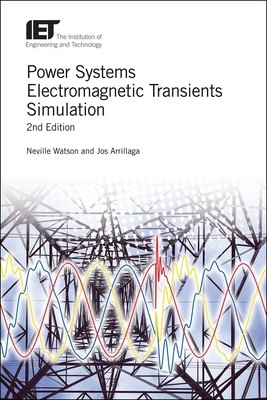
- We will send in 10–14 business days.
- Author: Neville Watson
- Publisher: Institution of Engineering & Technology
- ISBN-10: 1785614991
- ISBN-13: 9781785614996
- Format: 16.3 x 23.6 x 3.1 cm, hardcover
- Language: English
- SAVE -10% with code: EXTRA
Power Systems Electromagnetic Transients Simulation (e-book) (used book) | bookbook.eu
Reviews
Description
Accurate knowledge of electromagnetic power system transients is crucial to the operation of an economic, efficient and environmentally friendly power systems network without compromising on the reliability and quality of electrical power supply. Electromagnetic transient (EMT) simulation has therefore become a universal tool for the analysis of power system electromagnetic transients in the range of nanoseconds to seconds, and is the backbone for the design and planning of power systems, as well as for the investigation of problems.
In this fully revised and updated new edition of this classic book, a thorough review of EMT simulation is provided, with many simple examples included to clarify difficult concepts. Topics covered include analysis of continuous and discrete systems; state variable analysis; numerical integrator substitution; the root-matching method; transmission lines and cables; transformers and rotating plant; control and protection; power electronic systems; frequency-dependent network equivalents; steady-state assessment; mixed time-frame simulation; transient simulation in real-time; and applications.
EXTRA 10 % discount with code: EXTRA
The promotion ends in 19d.14:35:22
The discount code is valid when purchasing from 10 €. Discounts do not stack.
- Author: Neville Watson
- Publisher: Institution of Engineering & Technology
- ISBN-10: 1785614991
- ISBN-13: 9781785614996
- Format: 16.3 x 23.6 x 3.1 cm, hardcover
- Language: English English
Accurate knowledge of electromagnetic power system transients is crucial to the operation of an economic, efficient and environmentally friendly power systems network without compromising on the reliability and quality of electrical power supply. Electromagnetic transient (EMT) simulation has therefore become a universal tool for the analysis of power system electromagnetic transients in the range of nanoseconds to seconds, and is the backbone for the design and planning of power systems, as well as for the investigation of problems.
In this fully revised and updated new edition of this classic book, a thorough review of EMT simulation is provided, with many simple examples included to clarify difficult concepts. Topics covered include analysis of continuous and discrete systems; state variable analysis; numerical integrator substitution; the root-matching method; transmission lines and cables; transformers and rotating plant; control and protection; power electronic systems; frequency-dependent network equivalents; steady-state assessment; mixed time-frame simulation; transient simulation in real-time; and applications.


Reviews